Image Annotation Services
Image annotation labels and classifies objects in images to make them more useful in machine learning and other AI-based applications. This process is important for developing computer vision and image recognition systems and for training machine learning algorithms. Data Vision offers end-to-end data labeling services paired with full-time data annotation experts to deliver high-quality, error-free, human-labeled image training data that is cost-effective.
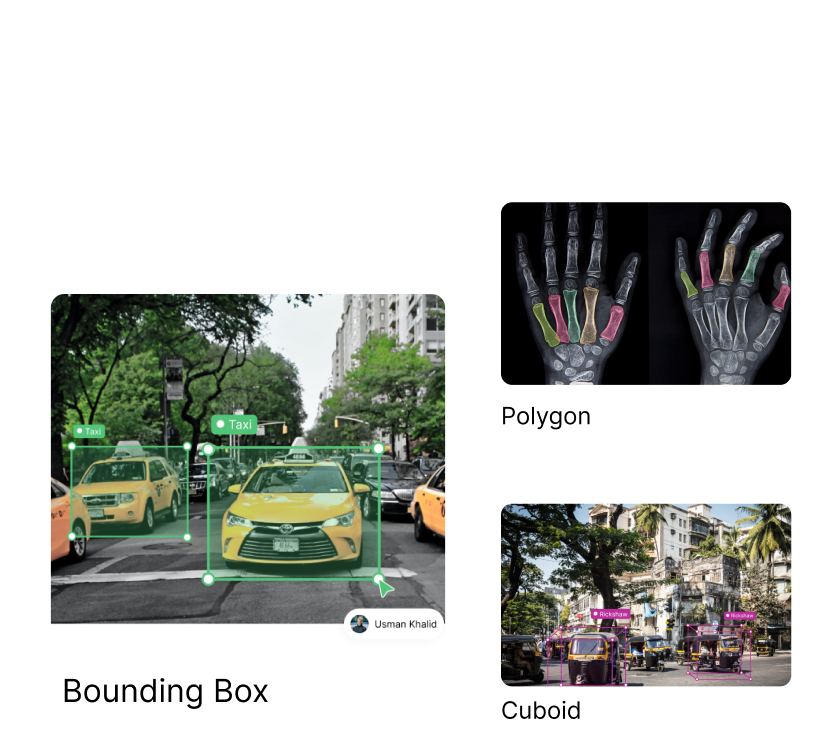
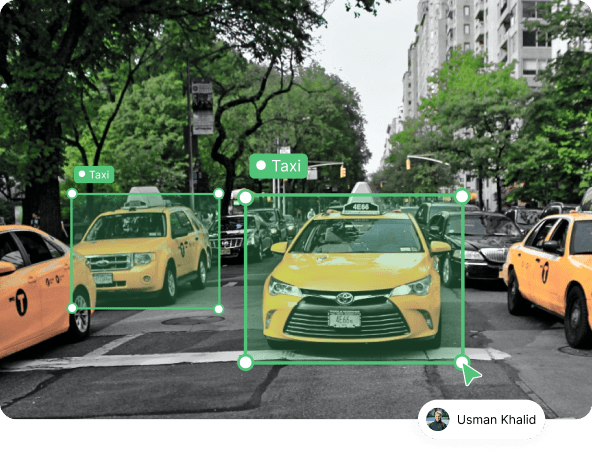
Bounding Box
A bounding box is a marked rectangle around an object in an image. It’s used in data annotation to teach AI where objects are, aiding tasks like object detection in self-driving cars or identifying items in photos.
Use Cases
- Structural Defect
- Monitoring the Growth of Plants in Agriculture
- Autonomous Vehicle and License Plate Identification
- Damage and Defect Detection, Anomaly Detection
- Product Identification
- ID Verification

Polygon
Polygon annotation is drawing precise shapes around objects in images, crucial for tasks like fine-grained object recognition. Data Vision excels in this role with expert annotators, advanced tools, and attention to detail, ensuring accurate polygon annotations that enhance AI model training.
Use Cases
- Detect irregular shapes like pedestrians or bikes in a street scene
- Getting precise building footprints
- Detect irregular shapes of products in manufacturing
- Asset Labeling in the chemical industry
- Structure labeling in the chemical industry
- Corrosion Detection
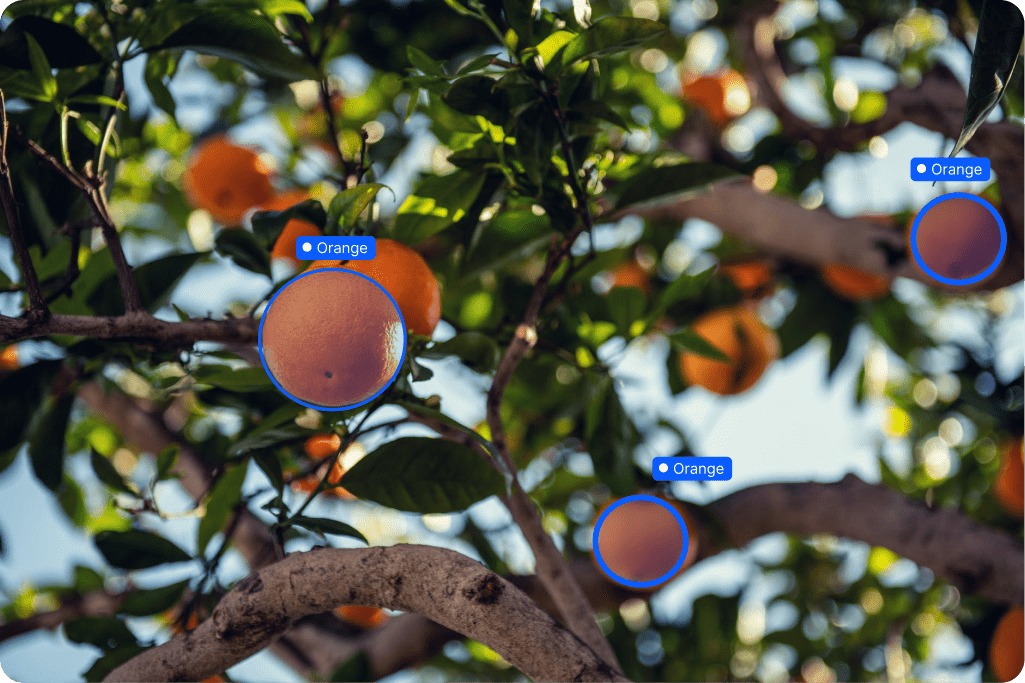
Elipses
An ellipse is a geometric shape used to annotate objects in two-dimensional (2D) images or planar surfaces, closed curve that resembles an elongated circle and is defined by its center coordinates, major axis length, minor axis length, and rotation angle.
Use Cases
- The Depth and Height Detection
- Localize Objects for Manufacturing
- Robotics Automation
- AR/VR Object Recognition
- Detect Obstacle Dimensions
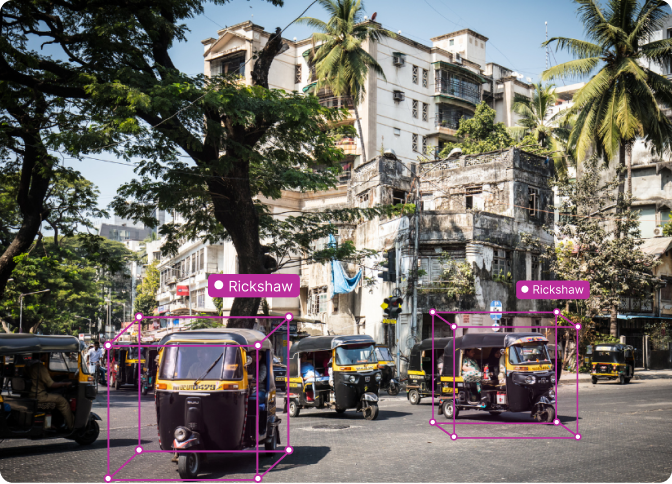
Cubiod
A three-dimensional bounding box that is used to enclose and delineate an object in a three-dimensional space. Commonly used in computer vision tasks that involve working with 3D data.
Use Cases
- Harvesting crops in Agriculture
- Detecting consumer actions
- Detecting hand gestures of manufacturing workers
- Tracking the movement of livestock

Key points
A KeyPoint refers to a specific point of interest or landmark within an object or an image. KeyPoint annotation involves identifying and labeling these critical points to provide important spatial information about the object’s structure, pose, or characteristics.
Use Cases
- Tracking instruments in robotic
- Tracking the movement of livestock
- Detecting hand gestures of manufacturing workers
- Detecting consumer actions
- Face & Emotion detection
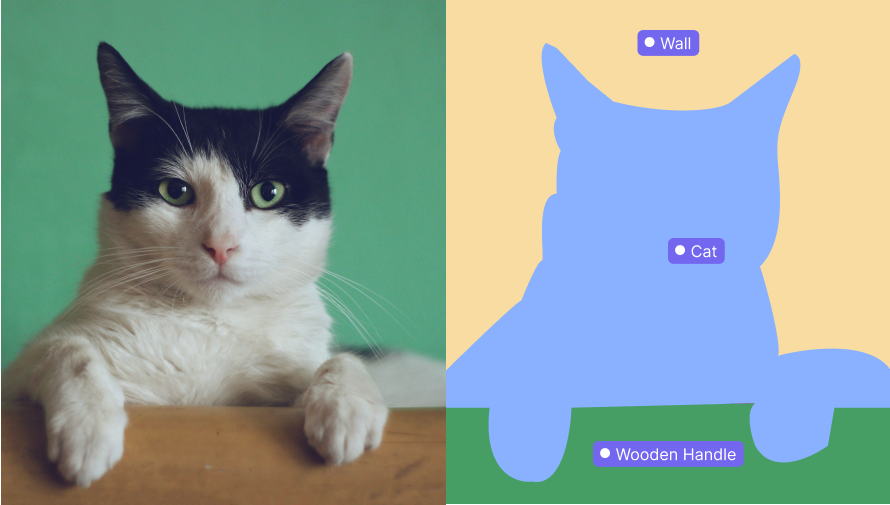
Semantic Segmentation
Semantic segmentation is used in computer vision that involves labeling each pixel in an image with a corresponding class label. It enables machines to understand the visual content of an image at a pixel-level granularity.
Use Cases
- Floor plan for real estate
- Pixel-wise objects track for automotive
- Clothing Segmentation & Categorization in Retail
- Recognize objects in the image in the pixel level
- Monitoring areas on satellite imagery
Ready to Get Started ? We Are
We’d love the opportunity to answer your questions or learn more about your project. Let us know how can we help

